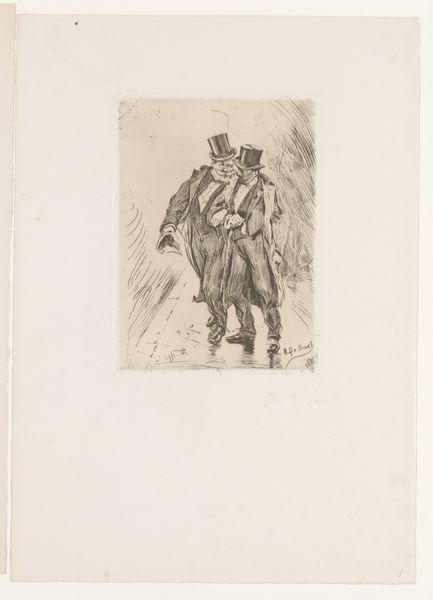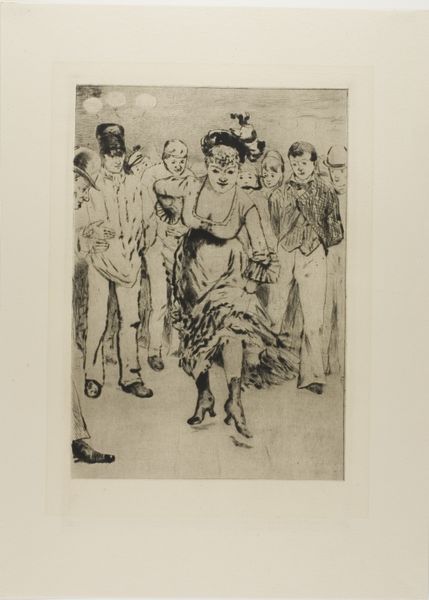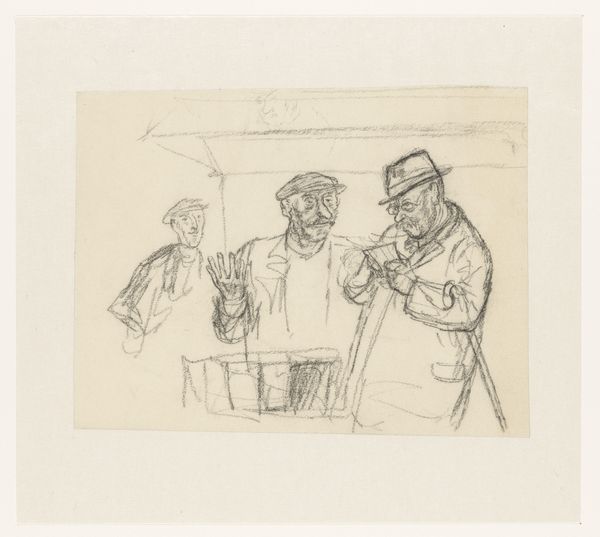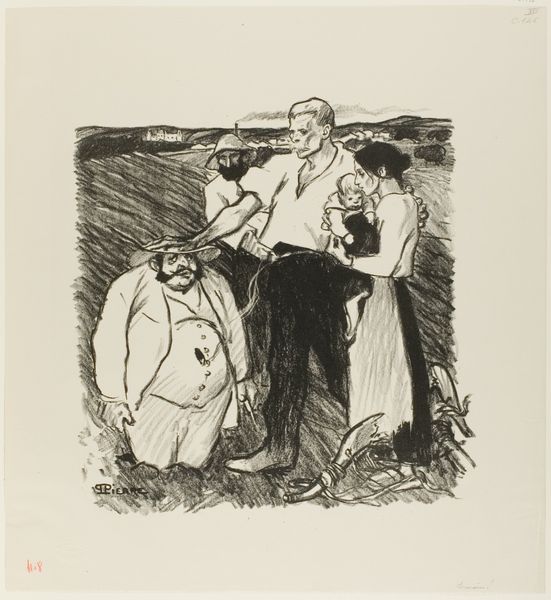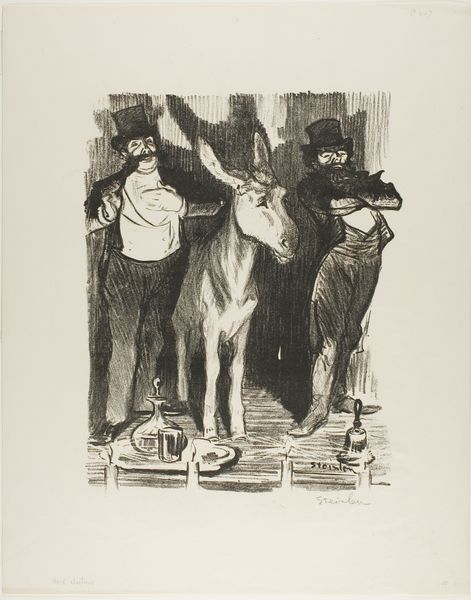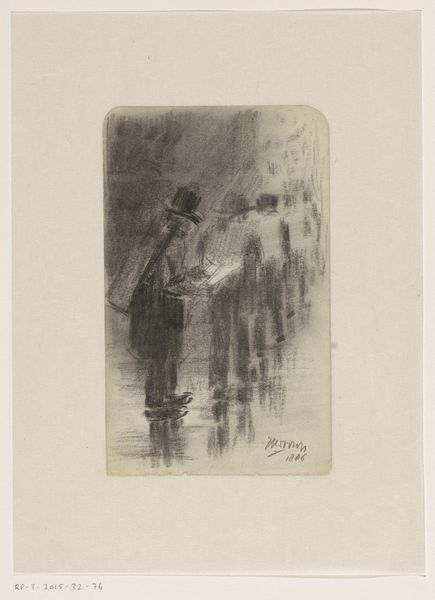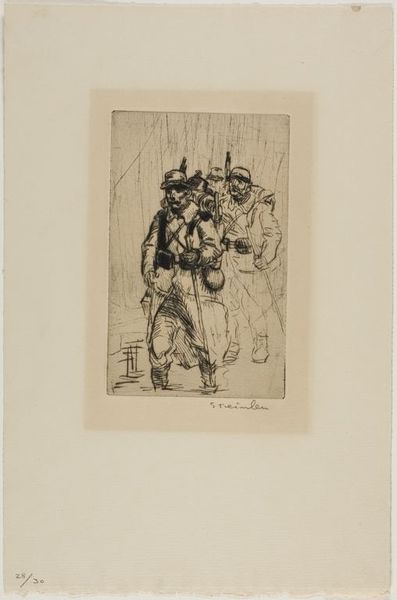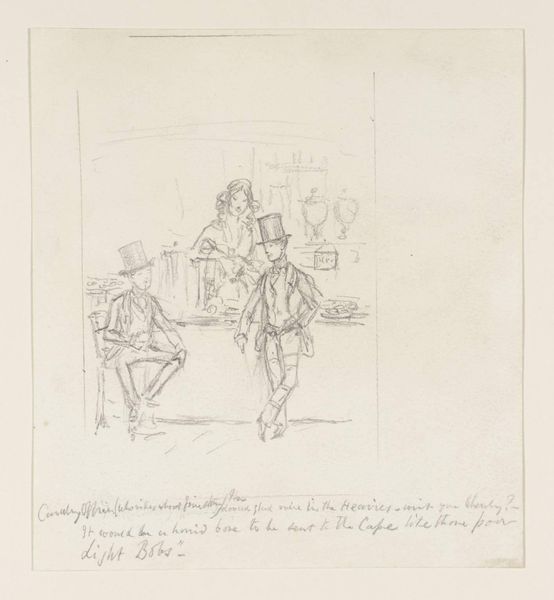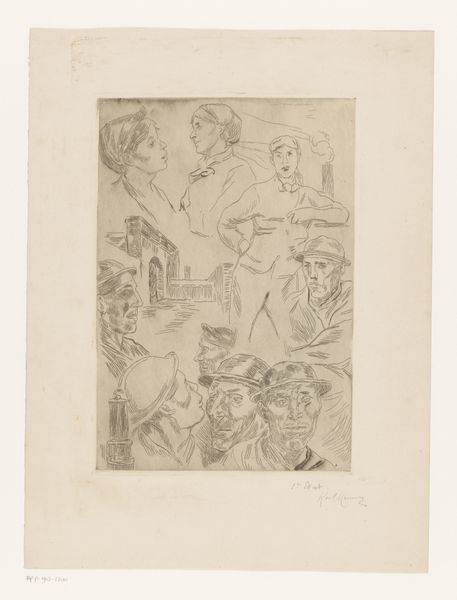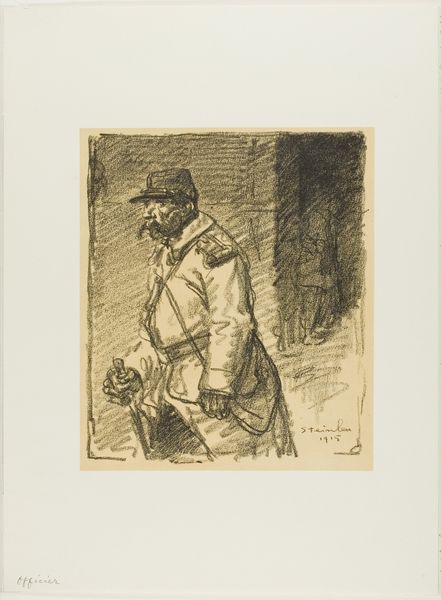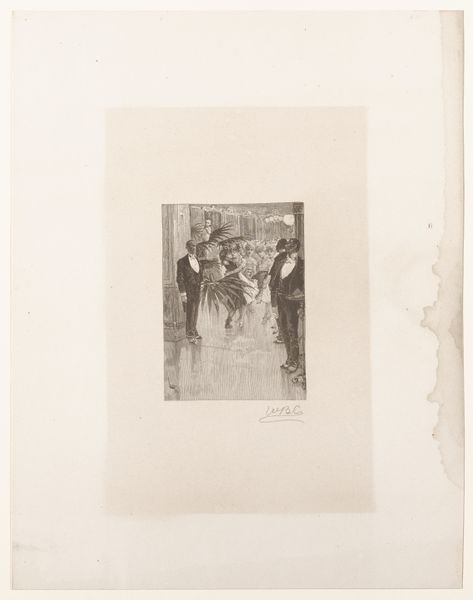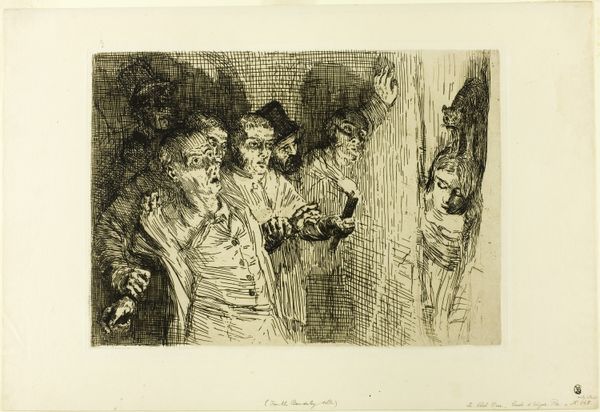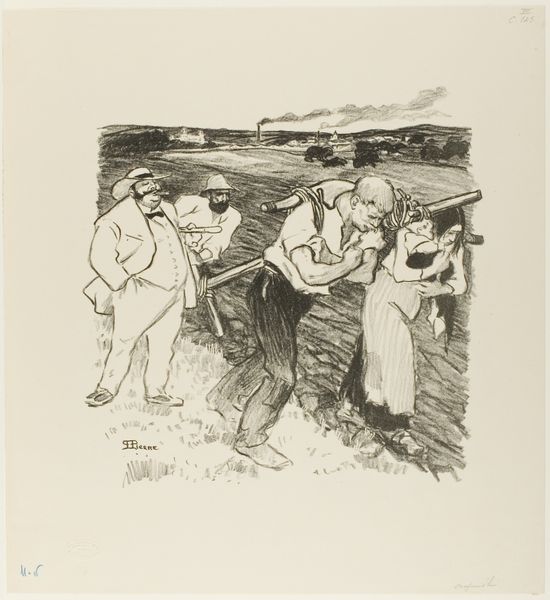
Plate from l'Assommoir (standing couple, with other figures in background) 1878
0:00
0:00
drawing, print, etching, paper
#
drawing
# print
#
impressionism
#
etching
#
paper
#
france
#
genre-painting
Dimensions: 257 × 206 mm (image); 287 × 226 mm (plate); 394 × 322 mm (sheet)
Copyright: Public Domain
Editor: This is Gaston La Touche's etching, "Plate from l'Assommoir," created in 1878. It looks like a candid snapshot of a couple, maybe on a street? The use of line is really interesting. What captures your attention in this piece? Curator: For me, the interest lies in the means of production and its connection to the depicted scene. Etching, as a reproductive technique, allowed La Touche to disseminate this image widely. Consider that "L'Assommoir" is a novel dealing with working-class struggles and alcoholism. Doesn't the print medium, itself a product of industrialization, mirror the mass culture that contributed to these struggles? Editor: That's a perspective I hadn't considered. So, the print medium itself becomes part of the commentary on the social issues depicted? How does it challenge conventional art boundaries? Curator: Precisely. Etching, often relegated to reproductive purposes, gains artistic merit here. Think about the labor involved. The artist, and potentially printmakers, engage in repetitive processes, akin to factory work. This blurring of "high art" and "craft" prompts us to question the hierarchies within art production itself. We can't separate this print from its inherent social and economic dimensions. Do you see the parallel? Editor: Definitely. So by examining the materiality and mode of production, we understand the artist's message in the cultural context more deeply. The material becomes the message. Curator: Exactly. We learn as much from La Touche’s etching technique, the reproducibility, as we do from what’s explicitly depicted on the surface. It brings a critical lens to consumption. Editor: This has made me see how analyzing the process is an insightful interpretation of social themes, and to see beyond the traditional views in art. Curator: Indeed, it allows us to broaden our understanding, and to appreciate art for the complex processes that produced it.
Comments
No comments
Be the first to comment and join the conversation on the ultimate creative platform.
